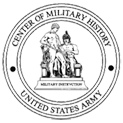
The Eastman Forts - Guide to the Print Set
The Artist:
SETH EASTMAN
Seth Eastman was born in Brunswick, Maine, on 24 January 1808. He graduated from the U.S. Military Academy at West Point in 1829 and began his Army career as a second lieutenant in the 1st Infantry Regiment. He served his first active duty assignments at the frontier posts of Fort Crawford, Wisconsin, and Fort Snelling, Minnesota. Eastman's avocation for painting drew him back to West Point in 1833, where he taught drawing until 1840.
After service with his regiment during the Florida War, he returned to Fort Snelling in 1841 with his wife, Mary Henderson Eastman, who wrote about the Indians in the area. One of her publications, Dakota: or, Life and Legends of the Sioux Around Fort Snelling, reportedly provided Henry Wadsworth Longfellow with material for his poem "Hiawatha." In response to his wife's request to illustrate her writing, Eastman painted a number of interpretations of Indian culture.
In 1848 Eastman led Company D of the 1st Infantry from Fort Snelling down the Mississippi River to the Gulf of Mexico and then across Texas. When the noted painter George Catlin turned down a request to illustrate a report on the American Indians in 1849, the Army sent Eastman to the Bureau of Indian Affairs in Washington, D.C., to work on the History, Condition, and Future Prospects of the Indian Tribes of the United States, which occupied him until 1855. He completed almost 300 plates for the project. He then returned to frontier duty with the 1st Infantry in Texas, where he assumed command of Fort Chadbourne.
After being promoted to major and transferred to the 5th Infantry in 1856, Eastman returned to Washington, D.C., in 1857 for special duty with the Quartermaster General. A year later he was again on frontier duty, this time with the 5th Infantry at Fort Crittenden in Utah. When the Civil War began in 1861, he was the mustering and disbursing officer for his home state of Maine and the state of New Hampshire. After promotion to lieutenant colonel in 1861, he became the military governor of Cincinnati in 1863. That same year he was retired "for disability, resulting from long and faithful service, and disease and exposure in line of duty." The Army, however, retained him on active service for the remainder of the Civil War, and he held various command positions, including Fort Mifflin, Pennsylvania.
In 1866 he received the rank of brevet brigadier general in recognition of his wartime service. The following year a joint resolution of Congress authorized him to paint pictures to decorate the Capitol. He completed two series of paintings for Congress: one of nine Indian scenes for the Indian Affairs Committee completed in 1869, and one of seventeen forts for the Committee on Military Affairs completed sometime after 1870. Eastman died at his home in Washington, D.C., on 31 August 1875 at the age of 68.
